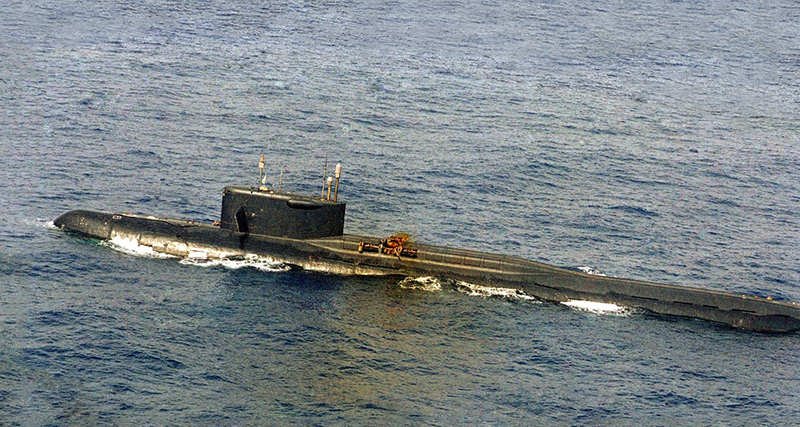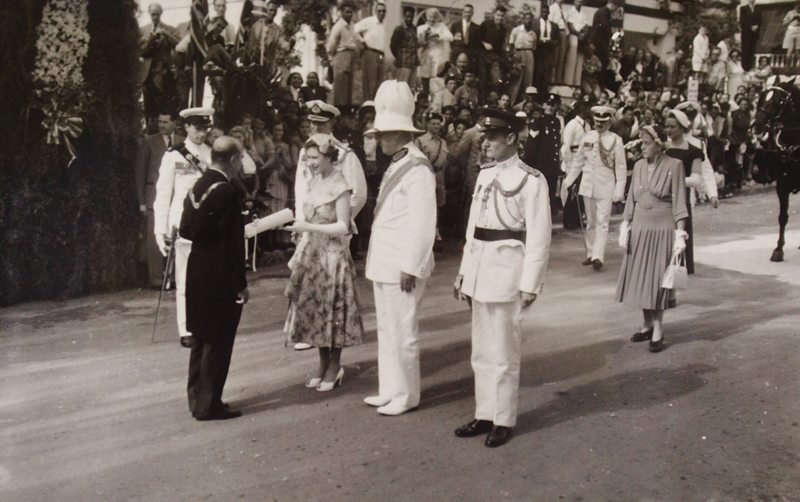The air of bleak Cold War irony which attended the incident now seems like something out of a John Le Carre novel.
But the events which unfolded in the Atlantic ocean just north of Bermuda over those three days more than 30 years ago were only too real.
On October 4, 1986 Ronald Reagan was at Camp David, the presidential retreat in rural Maryland. He was putting the finishing touches to a radio address he would deliver later in the day about his upcoming summit meeting with Soviet General Secretary Mikhail Gorbachev in Iceland. The superpower conference was being convened specifically to discuss nuclear arms reduction and non-proliferation proposals.
As the US President was revising his speech, he received a phone call relaying an urgent message from the Soviet leader.

Gorbachev’s brief communiqué had nothing to do with arrangements for the summit or any proposed last-minute changes to the agenda.
Instead he was notifying the US President about a potential worst-case situation involving a nuclear-armed and nuclear-propelled Soviet submarine. It was one which had started to play out in the Atlantic the previous day.
“Had a call that a Soviet Nuc. Sub. is on fire several hundred miles [north] of Bermuda,” President Reagan later noted in his diary.
His journal entry mirrored the calm and reassuring tone of the Kremlin dispatch.
“Russian ships are on hand—no danger of nuclear accident,” wrote the president. “Message was from Gorbachev. Seems Chernobyl had an effect.”
Carrying a crew of 115 and 42 nuclear missile and torpedo warheads, the Yankee class Soviet submarine K-219 was one of four or five such submerged launch platforms for weapons of mass destruction patrolling the waters between Bermuda and the US Eastern seaboard during that period of the Cold War.
Mr. Gorbachev’s message was certainly in keeping with his reformist policy of glasnost — or openness: earlier that year the Soviet Union had delayed a public announcement of the near-catastrophic accident at the Chernobyl nuclear power plant in what was then the Soviet Republic of Ukraine by several days.
Such pathological secretiveness was one of the legacies of decades of oppressive Soviet rule that Gorbachev was trying to put an end to with his reforms.
Shortly after Mr. Gorbachev contacting President Reagan, the Soviets issued this equally anodyne official statement: “In the morning of October 3, a fire broke out in one of the compartments of the Soviet nuclear submarine carrying ballistic missiles in the region about 1,000 kilometers north-east of Bermuda.
“The crew of the submarine and the Soviet ships that were nearby are fighting the fire. Three people were killed. The commission concluded that there is no risk of tampering weapons, nuclear explosions and radioactive contamination of the environment.”
But old habits die hard. And it now seems clear the Soviet leader was deliberately trying to downplay the possible urgency of the situation developing aboard the crippled K-219 as well as to conceal Kremlin fears the disaster had stemmed from US sabotage.
In fact only the exemplary courage of K-219 crew members struggling amid intense heat and poisonous fumes prevented a nuclear catastrophe in the mid-Atlantic, one which could have resulted from either a meltdown of the submarine’s nuclear reactors or the “cooking off” of its ballistic missiles’ warheads. Bermuda would likely have suffered “collateral damage” from any such disaster in the form of clouds of radioactive fallout.
In the event the submarine sank in 18,000 feet of water on October 6 after the malfunctioning reactors had been disabled. The crew was rescued by Soviet naval vessels.
Recently released Soviet-era transcripts of emergency meetings held at the Kremlin during those touch-and-go few days in 1986 reveal the heightened anxiety which existed in the country’s political and military leadership as the crisis played out.
Michael Peck, a contributor on military subjects to the National Interest website, had an opportunity to examine them and here is his report.













